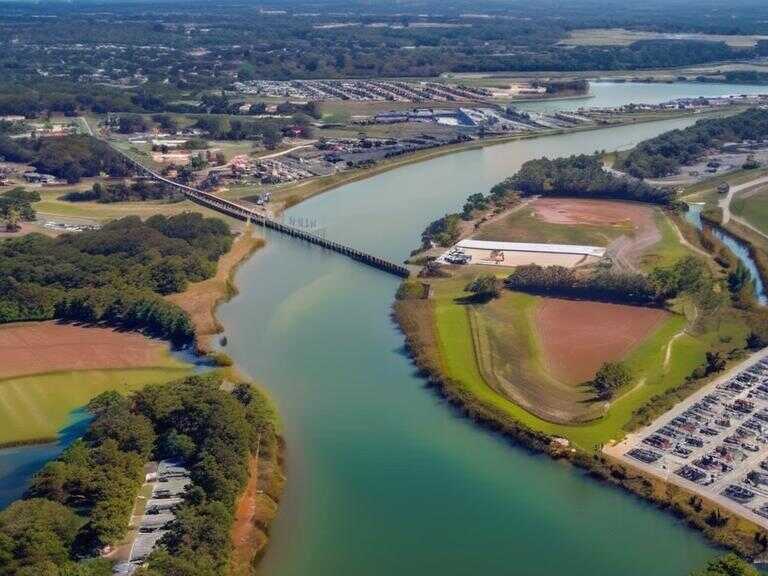
Logistics Firms Face $100B Hit from Extreme Weather, Innovate with AI to Combat Delays
Extreme weather challenges logistics, but companies like Walmart and Amazon leverage technology to adapt.

The demand for speedy delivery has become a norm for customers ordering online, with expectations of receipt within two days or less. However, the recent increase in adverse weather events, including Houston's heatwaves and Florida's hurricanes, poses significant challenges to logistics companies in meeting these delivery timelines.
Financial Impact of Weather-Related Supply Chain Disruptions
Shipping delays due to extreme weather conditions have led to warnings from logistics companies, with estimates from Freight Waves predicting weather-related supply chain disruptions to cost the industry around $100 billion in 2024. The impact of these disruptions is not limited to monetary losses but also extends to significant operational challenges.
Survey Results on Weather as a Transportation Challenge
In a recent survey conducted by Breakthrough, a freight solutions company focused on sustainable transportation, extreme weather was identified as the primary transportation challenge by 500 shippers and carriers. The Chief Operating Officer of Breakthrough, Jenny Zanden, emphasized the shifting focus of transportation professionals from cost reduction to addressing sustainability and climate-related disruptions as driving the need for fuel efficiency and changes to transportation strategy.
Global Transportation Conduits Affected by Weather Conditions
The adverse weather conditions are impacting key global transportation conduits, such as the Panama Canal, which has been plagued by drought conditions. However, the challenges are not limited to global transport routes but are also affecting major retailers in the U.S., who are struggling to fulfill customer orders and maintain stocked warehouses and stores.
Adverse Weather Impact on Retailers' Operations
Retail giants such as Walmart have faced operational challenges due to adverse weather events. In March, a snowstorm in Sparks, Nevada, led to the closure of Donner Pass, preventing Walmart from dispatching grocery deliveries from its Sparks center. To mitigate the impact of such events, Walmart turned to predictive analytics and artificial intelligence to optimize its last-mile strategies, enabling it to adapt and redirect its delivery operations more efficiently.
Walmart's Use of AI to Optimize Operations
Walmart's application of artificial intelligence and predictive modeling allows it to create a digital representation of its entire network. This technology enables the company to simulate and strategize responses to adverse weather events, including identifying stores or warehouses in the weather path that need to be shut down, and rerouting orders to unaffected locations. Through this approach, Walmart aims to minimize disruptions and ensure seamless service for customers, even in the face of unforeseen weather events, according to Parvez Musani, Walmart's senior vice president.
Target's Adaptation to Weather Challenges
Similarly, Target has adapted its logistics network to address any delays caused by adverse weather. The retailer pre-positions inventory, including essential items such as food, water, and batteries, in areas predicted to be affected by storms. Target's use of stores as fulfillment hubs allows it to quickly shift delivery origins across markets and provide multiple fulfillment options to ensure prompt delivery to customers.
Amazon's Response to Rising Temperatures
Rising temperatures have also become a serious concern for retailers like Amazon. Reports of high temperatures in delivery areas have prompted the company to implement measures such as adjusting delivery worker routes to allow for additional breaks and spending $59 million to insulate delivery vans. Furthermore, Amazon has invested in heat mitigation for its warehouses and mandatory indoor breaks for delivery workers in extreme cold, ensuring the well-being of its workforce.
Predictive Analytics and Cost Implications
Despite the additional costs associated with mitigating the impact of adverse weather, companies like Walmart and Amazon emphasize the importance of customer loyalty and meeting shipping time promises. By leveraging technology and predictive analytics, these retailers are able to maintain their shipping speeds while simultaneously managing costs.
Conclusion: The Role of Technology in Operational Agility
The challenges posed by extreme weather events require companies to adopt agile operational practices to meet customer expectations. The use of technology and predictive analytics allows retailers to optimize their delivery strategies, mitigate disruptions, and maintain efficiency while minimizing costs. As the industry grapples with the financial implications of weather-related supply chain disruptions, the integration of technology becomes increasingly crucial in navigating these challenges and sustaining customer loyalty.
Share news















